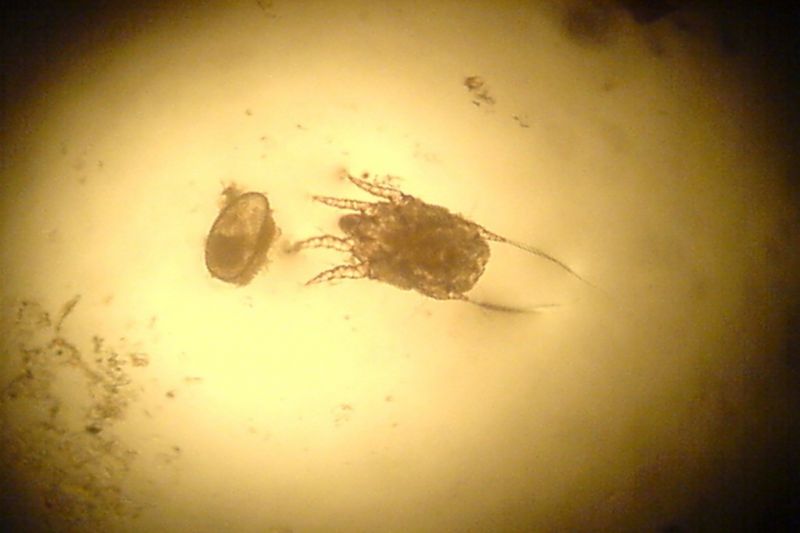Ear mites (Otodectes cynotis) are small arthropod insects that settle in the ear canal, actively multiply there and thereby cause inflammation and severe itching. This infection is transmitted to humans extremely rarely, but the animal causes severe discomfort and, if untreated, can even lead to death. To prevent this, start therapy immediately.
 Signs of an ear tick in cats
Signs of an ear tick in cats
The insect is very small (0.2-0.4 mm), so you can not notice it with the naked eye, especially if the animal has thick hair. Arthropod penetrates under the skin, feeds on blood and lymph, multiplies and excretes waste products.

You can recognize the disease by the following symptoms:
change in behavior (a mustachioed pet is anxious, fond of a person and seeks to scratch his head about him);
redness of the skin and scratches in the ear;
severe itching in the auricle leads to the fact that the pet constantly shakes his head, scratches his ears with his paw or rubs against objects;
yellow-brown discharge (sulfur) and dried dark brown crusts appear on the inner side of the hearing organ, these accumulations often exude an unpleasant (purulent) smell;
partial or total hearing loss.
If at this stage you do not use an effective remedy for ear ticks, then the inflammation passes into otitis media, and then it can penetrate the brain. Then the body temperature rises, mental disorders are possible.
_120x126.jpg) Reasons for the appearance and route of infection with otodectosis
Reasons for the appearance and route of infection with otodectosis
You can get infected from a sick animal (not only from a relative) or from an infected object (bowls, combs, beds, etc.). Moreover, the risk exists, even if the beast never leaves the house. After all, a person imperceptibly brings these little arthropods from the street on his clothes and shoes. This is especially true if homeless felines live in the stairwell.
In addition, ticks are carried by flies and fleas. Therefore, it is important for pets to periodically be treated with insecticides.
_120x102.png) How to get rid of an ear tick in cats
How to get rid of an ear tick in cats
Treatment of otodectosis only begins after an accurate diagnosis is made in the veterinarian. Usually a study is carried out under a microscope. The disease is often disguised as others, so it is better not to self-medicate.
After confirming the diagnosis, thoroughly clean the auricles with a cotton swab dipped in an antiseptic (e.g. Chlorhexidine) or a veterinary lotion. Then carefully enter the medicine and massage the ear so that the drug is better distributed.
Currently, from the ear tick for cats use special drops (injected with a pipette or syringe), ointments, gels or aerosols, which are sold in a veterinary pharmacy. The instructions for a particular drug indicate how often it should be used. It is unrealistic to remove the tick in one procedure. Usually, manipulations should be repeated several times every 5-7 days. Recovery occurs after 1-3 months.
To achieve success, carefully observe the dosage of the drug and treat both organs, even if symptoms of otodectosis are observed in only one.
Now you know how and how to treat an ear tick in a cat. And in order to avoid re-infection, do not let your animal come into contact with stray animals, regularly inspect its external auditory canal and clean it with cotton buds and a special preventive lotion every 2-4 weeks.
 Select language
Select language 





.jpg)
.jpg)
.jpg)
.png)
